
Marine Hardware
The main materials for marine propellers and the differences
The main materials for marine propellers and the differences
Article By Robin Zhang
The propeller is used as a powerful force-receiving component for propulsion. The internal strength requirements are also high, and there should be no tracheotomy or air bubbles.
Therefore, the blades of large propellers cannot generally be formed by forging. At present, high precision casting is the main method of production which can be used in industry. One-time casting and then the surface is polished by mechanical polishing to meet the requirements.
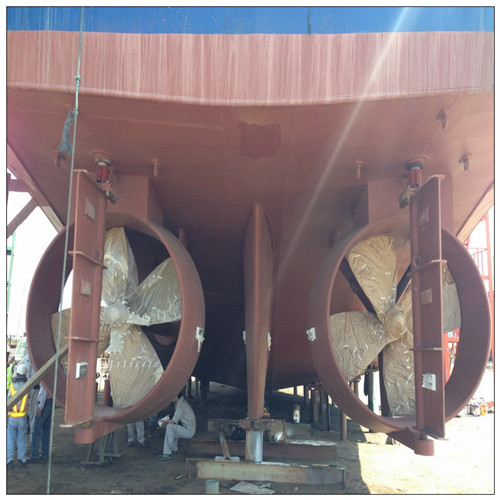
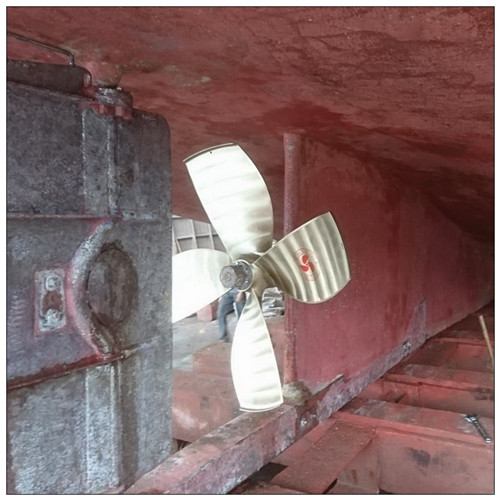
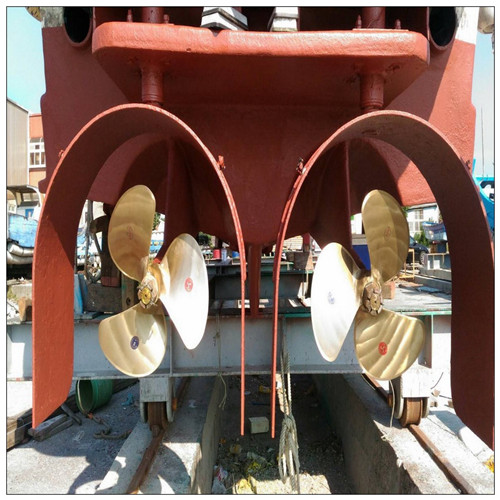
(Bronze marine propeller, marine hardware & stainless steel propellers)
As far as industrial casting technology is concerned, copper has a low melting point and is easy to cast. The fluidity of the hot copper liquid is good, the casting bubbles are less, and the smoothness is high. Therefore, the propeller material is almost monopolized by copper alloy, and the most used is nickel aluminum bronze(CU3).
The propeller is an important part of the ship. Selecting a right raw material for making the propeller which has a great influence on its performance. For a long time, the copper alloys, and nickel-aluminum bronze is always the first choice and widely used as the marine propeller materials.
The main reasons are:
(1) The copper alloy has a good performance of corrosion resistance, which can basically meet the requirements of the propeller in seawater;
(2) The melting point of the copper alloy is so low that is convenient for melting and casting. The casting item does not need to be heat treated, and it is easy to finish machining and used.
At present, manganese brass (ZHMn55-3-1), aluminum-manganese brass (ZHAI67-5-2-2) and manganese-aluminum bronze (ZQAI12-8-3-2) are commonly used in China. Among them, the neutralization performance of manganese-aluminum bronze is better than Manganese brass and aluminum-manganese brass are excellent. The subsequent development of more types of stainless steel materials greatly improves the overall performance of the propeller. Moreover, people have not stopped exploring new materials and performance for ship propellers.
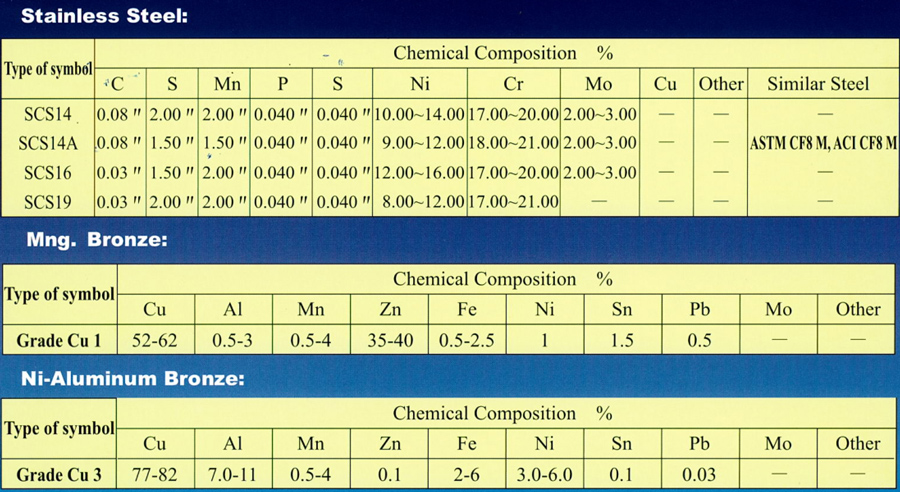
(The elements of the marine propellers supplied by www.nxymarine.com)
Nickel aluminum bronze (CU3) has an excellent performance of resistance to stress corrosion cracking, resistance to corrosion fatigue, cavitation corrosion resistance, erosion resistance and marine biological fouling.
Nickel aluminum bronze is far beyond than stainless steel and brass in seawater corrosion and fatigue resistance, and even better than manganese bronze. Its erosion resistance which is also far better than brass, and the performance of cavitating corrosion resistance is exceptionally good.
What i need to emphasize is that Nickel aluminum bronze almost has the same performance on seawater uniform corrosion resistance, cavitation corrosion and corrosion fatigue when it is compared with super duplex stainless steel(DSS). There is no pitting corrosion in seawater, no chloride stress corrosion cracking, and its strength is comparable to austenitic stainless steel.
Nickel aluminum bronze(CU3) also has excellent thermal and electrical conductivity, good wear resistance, welding performance, and low price.
The cost of cast nickel aluminum bronze is much lower than cast super duplex stainless steel or super austenitic stainless steel.
Therefore, Judge from the perspective of price and corrosion performance, nickel aluminum bronze can fully meet the needs of seawater piping, and the scope of application is gradually expanding.
Otherwise, CU3 is mainly used in marine propellers, large pump blades, fasteners, seawater pipe fittings, fire hydrants, valves, seawater desalination devices, etc.
However, nickel-aluminum bronze still has two main disadvantages:
First, the corrosion resistance in polluted seawater is reduced.
Second, it is more sensitive to phase selection corrosion.
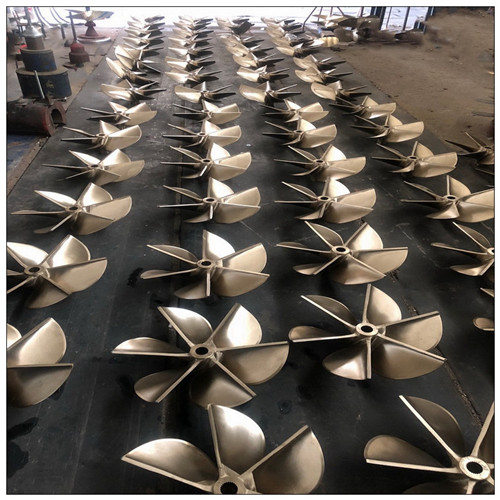
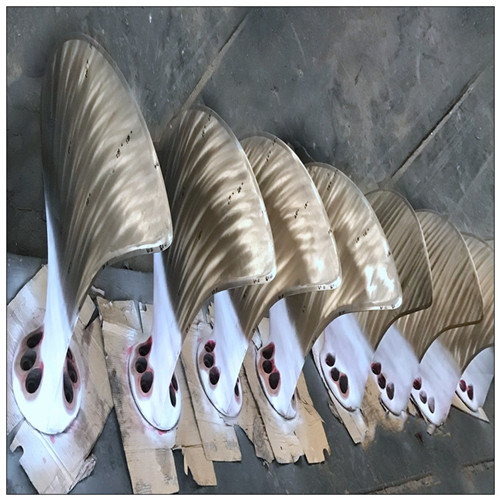
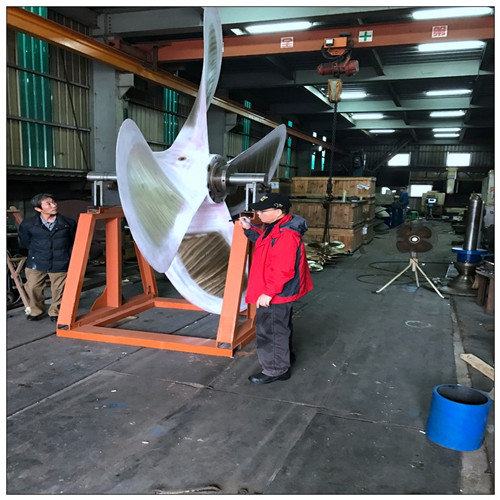
(Pictures took from NEW XIANG YI MARINE FACTORY)
For a long time, most of the marine propeller materials are adopt to copper alloys, and nickel-aluminum bronze is the first choice.
Due to the significant increase in the strength of copper alloy materials are limited, and also with the up-sizing of ships and the increase of uni axial power, it is urgent to develop propeller materials with higher strength.
In addition, in recent years, the sea water pollution in the harbor and river waters has intensified, and the corrosion resistance of the copper alloy propeller has begun to appear problems.
Due to the discharge of industrial waste water and urban sewage, the organic matter in the seawater has increased greatly, leading to the proliferation of anaerobic sulfate-reducing bacteria. Sulfate in seawater is reduced to produce glaze, which has a strong corrosive effect on copper alloys.
As a result, copper alloy propellers are often damaged by such corrosion, even after only a few days of use the propeller surface will turns black and rough. So, instead of copper alloy, the stainless steel spiral material has become a new direction of propeller development.
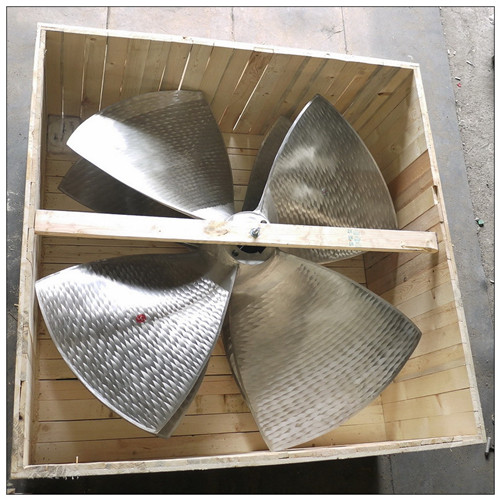
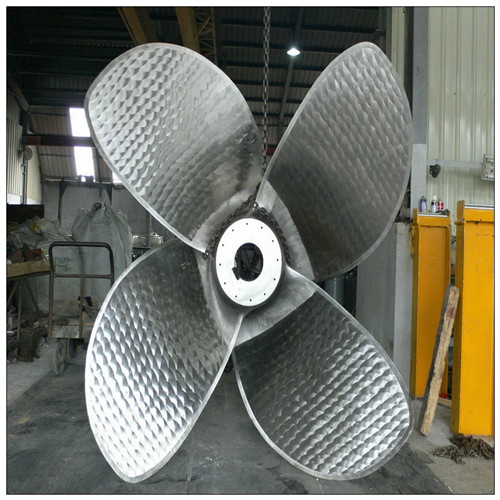
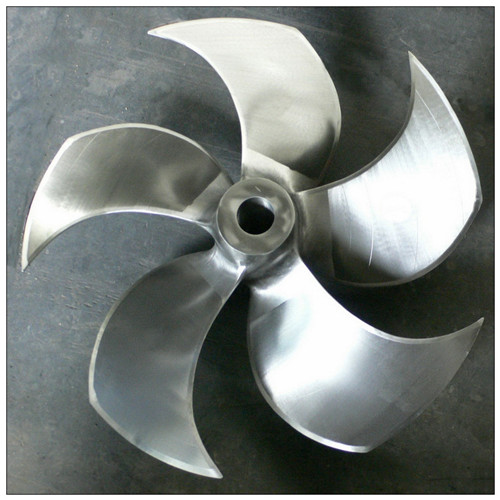
(Stainless Steel Marine Propellers from NEW XIANG YI FACTORY)
At present, it is also possible to use stainless steel casting for marine propellers, but the overall casting technology of stainless steel parts is too difficult. The melting point of stainless steel is so high that the fire resistance of the casting mold has to be improved. There is an empirical formula in industry that the casting temperature is increased by 100 degrees, and the cost is doubled. The melting point of bronze is only 800 degrees, while stainless steel has a melting point of 1700 degrees. The temperature difference is 900 degrees, and the casting cost is nine times higher. Moreover, the cost of precision welding and hard surface polishing is needed,which is much more expensive. So stainless steel propellers have not been popularized widely.
Secondly, compared with steel materials, copper alloy propeller has its advantages: low chemical activity and not easy to oxidize, especially nickel-copper alloy, which keep not corrupt for decades, bright as ever.
Copper ions are heavy metal ions and have certain toxicological effects. In the state of seawater, algae and shellfish are difficult to survive, with less adhesion,and are easy to clean.
The cutting performance is good. Under the same cutting conditions, the surface accuracy that can be obtained at least 2 grades higher than that of steel materials. No work hardening phenomenon, the tool loss is small, easy to process, the surface accuracy, often determines the noise size.
categories
recent posts
copyright © 2025 XIANG YI INTERNATIONAL LTD..all rights reserved. powered by dyyseo.com

ipv6 network supported